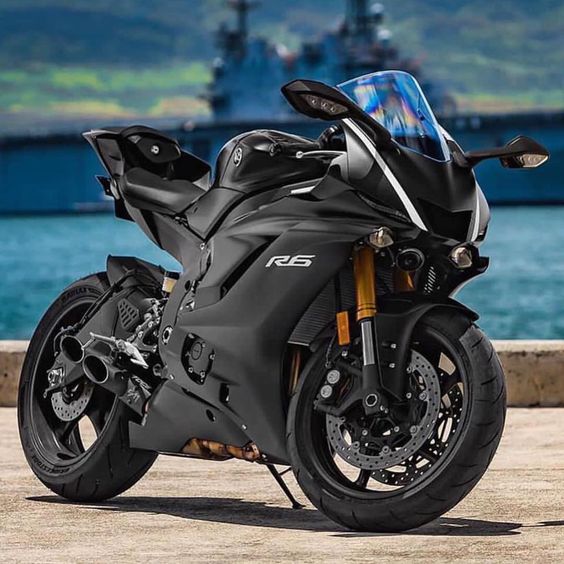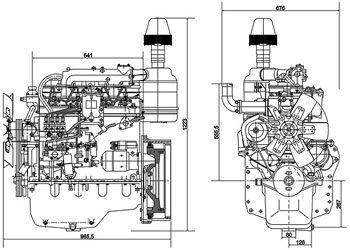
The 600cc engine in sport bikes - the history of the 600cc engine from Honda, Yamaha and Kawasaki
Content
The first two-wheeled vehicle with a 600 cc engine. see was Kawasaki GPZ600R. The model, also known as the Ninja 600, was released in 1985 and was completely new. The 4cc liquid-cooled inline 16-valve 592T engine with 75 hp became the symbol of the sporty class. Find out more about the 600cc unit from our text!
The beginning of development - the first models of 600cc engines.
Not only Kawasaki decided to create a 600 cc unit. Soon, another manufacturer, Yamaha, saw the solution. As a result, the offer of the Japanese company was replenished with FZ-600 models. The design differed from the Kawasaki model in that it was decided to use air rather than liquid cooling. However, it provided less power, leading to the financial ruin of the plant.
Another engine of this power was Honda's product from the CBR600. It produced about 85 hp. and had a striking design with a distinctive fairing that covered the engine and steel frame. Soon, Yamaha released an improved version - it was the 600 FZR1989 model.
What varieties were produced in the 90s?
Suzuki entered the market with its supersport bike with the introduction of the GSX-R 600. Its design is based on the GSX-R 750 variety, with the same components, but a different power. He gave out about 100 hp. Also during these years, upgraded versions of the FZR600, CBR 600 and another GSX-R600 were created.
At the end of the decade, Kawasaki again set new momentum in the development of 600 cc engines. The company's engineers created the premiere version of the already iconic ZX-6R series, which featured much better performance and high torque. Yamaha soon introduced the 600 hp YZF105R Thundercat.
New technologies in 600cc engines
In the 90s, modern building solutions appeared. One of the most important was from Suzuki with the GSX-R600 SRAD with a similar design to the RGV 500 MotoGP. It uses Ram Air Direct technology - a proprietary air injection system where spacious air intakes are built into the sides of the front nose cone. The air was passed through special large pipes that were sent to the air box.
Yamaha then used a modern air intake in the YZF-R6, which produced 120 hp. with a fairly low weight of 169 kg. We can say that thanks to this competition, 600-cc engines were used to create solid models of sports bikes that are produced today - the Honda CBR 600, Kawasaki ZX-6R, Suzuki GSX-R600 and Yamaha YZF-R6.
The post-millennium period - what has changed since 2000?
The beginning of 2000 was associated with the launch of Triumph models, in particular the TT600. It used a standard configuration with a liquid-cooled inline four-stroke four-cylinder unit - with four cylinders and sixteen valves. However, a complete novelty was the use of fuel injection.
Not just 600cc engines
There were also larger capacity units - 636 cc. Kawasaki introduced the ZX-6R 636 two-wheeled motorcycle with a design borrowed from the Ninja ZX-RR. The engine installed in it provided a higher torque. In turn, Honda, in a model heavily inspired by MotoGP and the RCV series, created a motorcycle with a Unit-Pro Link swingarm that fits under the seat. The exhaust and suspension were no different from the version known from popular competitions.
Yamaha soon joined the races with a YZF-6 that hit 16 rpm. and is very popular to this day - it is available after several modifications.
600 cc engine at the present time - what is it characterized by?
Currently, the market for 600cc engines is not developing as dynamically. This is due to the creation of completely new classes of drives, such as adventure, retro or urban. This is also affected by restrictive Euro 6 emission standards.
This segment is also reflected in the creation of more powerful 1000cc engines, which also contain many modern technologies that affect safety and driving smoothness - with much better performance, as well as the introduction of traction control systems or ABS.
However, this engine will not disappear from the market anytime soon, thanks to the continued demand for medium power units, cheap operation and high availability of spare parts. This unit is a good start to adventures with sports bikes.

